The UK’s Adoption Industry Is In Crisis

‘If people think adoption is the answer, then we're just recreating cycles of history and haven't learned anything,’ says Satwinder Sandhu, Chief Executive at IAC – The Centre for Adoption. To be unequivocally clear, he isn’t suggesting for a minute that people should not adopt one of the 90,000 children currently in the British care system. He refers specifically to the ‘very simplistic arguments’ that we’ve seen touted in the USA - with renewed vigour after the Roe v Wade repeal - ‘about adoption being an alternative to termination.’ With abortion in the UK facing an uncertain future too, there’s mounting pressure here on adoption to be the white knight. And the truth is, according to Sandhu, that ‘there is a lot of work that needs to be done before we get anywhere near a care system that’s fit for purpose. People like to romanticise adoption, and say it's a fairy-tale. It’s not.’
Worse than not being a fairy tale though, there’s something of an adoption crisis in the UK, which most people seem to be unaware of. The truth is: adoption is in rapid decline.
In the period 2020-21, the number of children being adopted fell to the lowest level in 21 years. This is despite the rate of children being looked after by the care system increasing. Furthermore, the average amount of time children with a placement order (a court order authorising a local authority to place a child for adoption) spent waiting to be placed, rose to 667 days, an increase from 2019 when it was 556. During the year ending March 2021, 84% (2,410) of adopted children were white, while ethnic minority children, sibling groups and those with additional health needs were all at a clear disadvantage. The current stats stress that unwanted or neglected babies all too often remain that way. They become unadopted children and teens, bouncing around the care system. So, what’s broken? It’s time to peer deeply into the UK’s adoption industry and see what can be fixed.
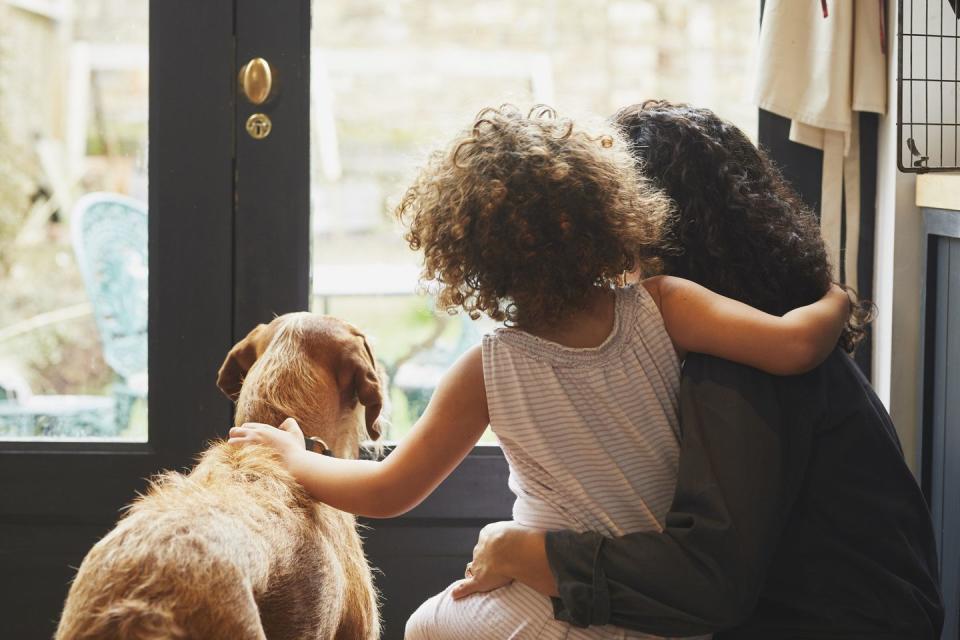
A Big Misconception
‘There's a real mismatch between the children who are waiting and the adopters who are looking,’ says Paul Dolan, adoption service manager at Adoption Matters. Contrary to popular conception, adoption is seldom about babies. What perhaps people misunderstand, is that in the UK, adoption happens out of the care system. Unlike America, we have no private services matching pregnant women with prospective parents, like you might have seen in Chandler and Monica’s storyline in Friends. In order for a child to become available for adoption, they have first to have been identified by social services as at risk of neglect or harm. Relinquished babies are incredibly rare. According to Dolan, just ‘1% of the children that are adopted in the UK, would be voluntarily given up for adoption by the birth mum.’ On balance, he says, ‘It takes time for neglect and harm to be identified and acted on,’ meaning children do not frequently make it into care before they’re two or three.
So, while ‘the adopters that are coming forward tend to look for single children, babies and typically those that have experienced less harm,’ Dolan says, ‘the children who are waiting at the moment are predominantly part of sibling groups, are older and have experienced more harmful things in their lives (making them less trusting of adults), or they are children with additional needs.’
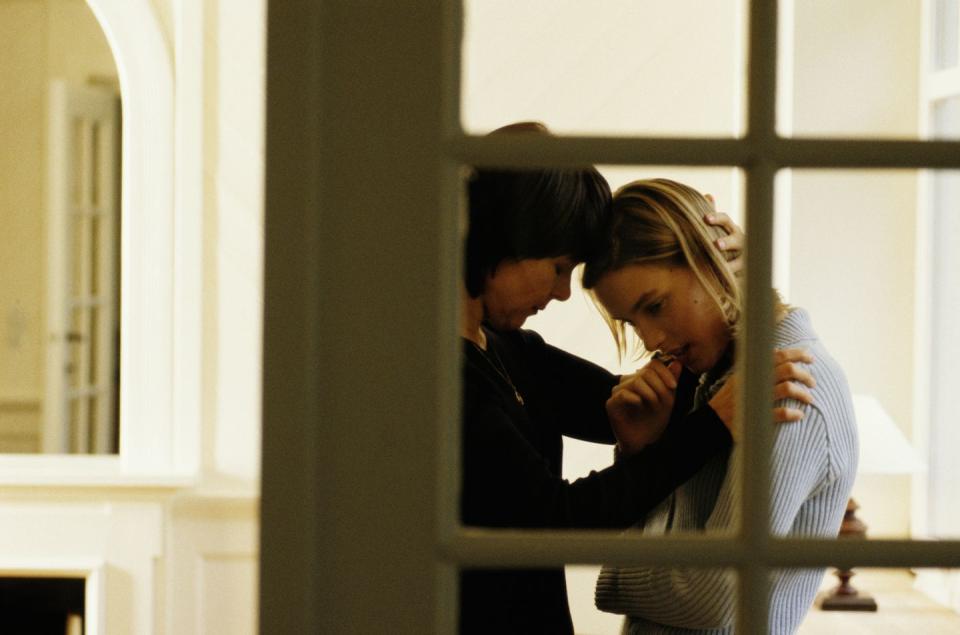
Sandhu corroborates this: ‘The reality is that not very many of the adopters coming forward are going to be in a position where they can offer to parent children with that level of need.’ While campaigns such as A Life Less Ordinary, which professes ‘these children may be harder to place, but they are not harder to love,’ have attempted to overturn this, the problem persists.
Adoption is a Last Resort
The issue is also that adopters are in scarce supply for a range of other reasons too. For those looking to start a family, the advancement of science has greatly impacted our routes to parenthood. Treatments like IVF and the option to keep eggs and embryos on ice have all conspired to make achieving biological offspring possible, even where fertility is much reduced. On the one hand, this is a wonderful and welcome achievement, but we can also acknowledge that it has the potential to push adoption much further down the list of recourses.
‘Adoption was never mentioned as an alternative route to parenthood,’ says 34-year-old Naomi, who tried to have a baby naturally, miscarried and later received an infertility diagnosis. She did eventually adopt a 21-month-old boy with her husband in 2019, but only after she and her husband spent years ‘fighting to become parents’ biologically and through IVF.
In 2020, it was reported that IVF success rates had tripled over the last 20 years. Advances in fertility treatment over the past three decades means that IVF cycles have increased from 6,700 in 1991 to over 69,000 in 2019. While 90% of fertility patients are heterosexual, HFEA shared that in 2018, 2,151 IVF treatment cycles were recorded for patients in female same-sex relationships, compared to 320 in 2008, and 1,352 IVF cycles for single patients in 2018, compared to 531 in 2008. The growth in cycles has stabilised since 2017, but frozen embryo transfers continue to increase year on year, by as much as 86% between 2014-2019. And the proportion of IVF cycles undertaken by patients aged 40 and over has more than doubled from 10% (689 cycles) in 1991 to 21% (14,761 cycles) in 2019. Technology and treatment advancements have led to more successful outcomes, with birth rates for all patients under 43 improving yearly.
Beyond active IVF, there is also the option of egg freezing, which has increased from 230 cycles in 2009 to almost 2,400 in 2019 (despite it costing £7,000-£8,000 and not being available readily on the NHS) which allows people to feel they can extend their fertile period and delay decision-making. Beyond that, there is also surrogacy. Sarah Williams, head of surrogacy, adoption, fertility and modern family at legal firm Payne Hicks Beach says a lot of enquiries she gets around surrogacy are from those who have had a round of unsuccessful IVF.
Those who aren’t successful in their IVF ventures do often consider adoption as a fallback option. However, adoption agencies such as PACT ask for a minimum six-month healing period between ending IVF treatment and applying to adopt, which perhaps tempers the appeal.
‘We need to bring adoption into the 21st century,’ says Naomi, by educating people about the realities of it and making it more of a consideration.
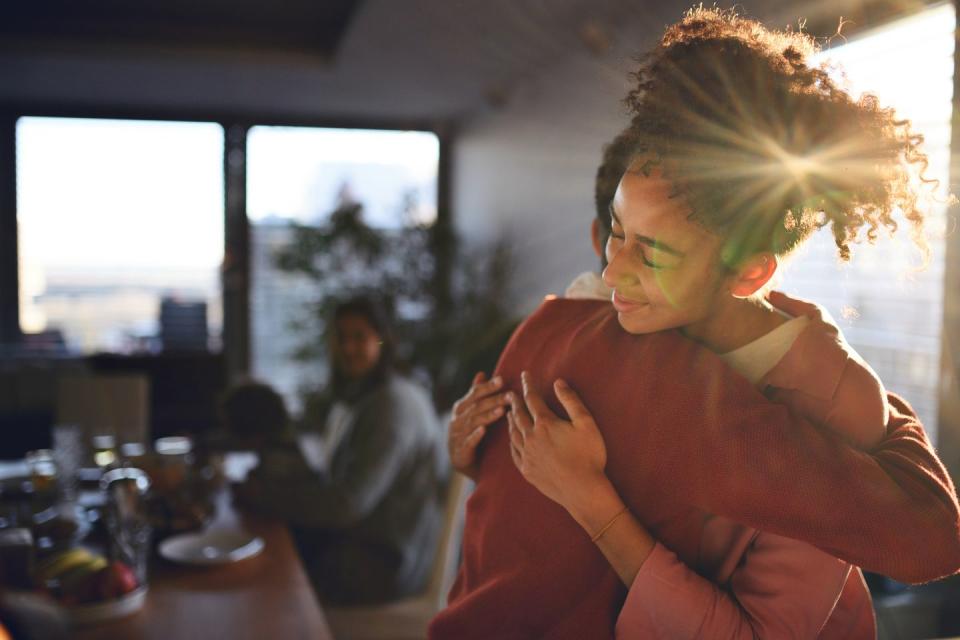
Adoption is hard
Satwinder Sandhu cautioned against believing adoption to be a fairy-tale. The reality of the situation is that while it is often a story of hardship, rescue, selflessness and love, it is also an extremely difficult and challenging road to travel down, both during the adoption process and long afterwards too.
‘It's intense. It is like a massive job interview,’ says adopter Madeline of the process. ‘It's also much harder on your own.’ She adopted her son as a single mum aged 40, some 10 years ago. Another mother, Lena, agrees, finding it extremely tough even though ‘[she] didn't have any kind of massive skeletons in [her] closet… or a series of ex-partners that had to be interviewed.’
Necessarily, in an attempt to prevent poor outcomes for children who have already experienced hardship, the adoption approval process for prospective parents is emotionally challenging, exhausting and long. It requires reliving painful experiences, information from referees, physical and mental wellbeing checks and an assessment of your ‘childcare experience.’ And even if people start the journey, they may also quit before they get close to being matched with a child. The number of approved adoptive families waiting to be matched has gradually increased since 2019, to a high of 2,370 in September 2021, 23% higher than the year before, but adoptions themselves are still in decline, proving that even if the process runs smoothly, it’s no guarantee that there will be a child at the end of it.
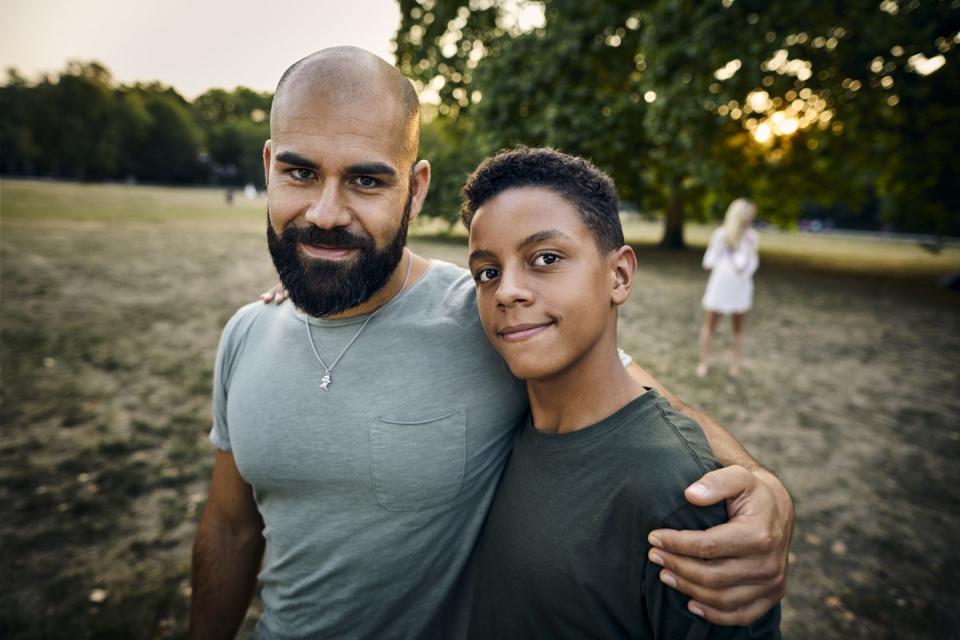
That’s before you’ve even broached the subject of caring for a child that has already experienced some level of harm. ‘The children that we've got waiting have come through the care system,’ Sandhu reiterates. ‘They haven't been voluntarily relinquished for adoption, like babies were in the 1950s. These are children who've had difficult starts in life, sometimes difficult pre-birth experiences, if they've had exposure to drugs and alcohol or violence, for example. And therefore, they've been removed through court processes, have been in foster care, may have been back and forth to birth family or relatives multiple times before a judge has decided that, actually, adoption is in this child's best interest.’
‘Each one of those experiences that they've had will have resulted in a level of trauma that they now have to overcome,’ he continues. Making sure these children go to homes that will in some way reverse the damage is paramount, and that presents a level of preparation among adoptive families that isn’t necessarily expected of those conceiving their children biologically. It requires time, attention, resources and patience as parents learn to care for a child that isn’t a blank slate.
Naomi says she wasn’t ready for the difficulties she encountered when bringing her son home. She recalls: ‘He was totally and utterly in love with his foster carers. He adored them, they were his world. We took him away from them.’
‘He totally rejected me initially,’ she continues. This isn’t uncommon, according to Maggie Davies, an adoption manager at Coram, a voluntary agency running for more than 40 years. ‘When children are removed from their birth parents, that is the most severe thing that you can do. They've all experienced loss, change, trauma in their young lives. These children have not had a secure attachment,’ and the effect of that can be profound.
Adoption in times of crisis
Adoption’s decline isn’t the only crisis the UK is living through. As we descend more deeply into ‘cost of living’ hardship, it’s likely that the number of adoptions will only decrease further. While there are no up-front costs to adoption, you must be financially ready, because while foster carers in the UK receive a regular allowance to cover the costs of the child in their home, adopters don't.
Social workers will ask that you are ‘settled’ in life beforehand. Though this doesn’t mean having a high salary or owning a property, adoption agencies require a prospective parent to be debt-free, and social workers are responsible for flagging patterns of impulse buying or slipping into financial instability.
For example, when Lena initially set out to adopt, she had to wait a few months before kickstarting the process due to still being on probation at her job and attempting to get on the property ladder. In Lena’s case, she also wasn’t eligible for adoption leave until she’d worked for six months at her company. Still, with a secure job, she had a better chance of financial security than a self-employed applicant (there were 4.25 million self-employed people in the UK as of May 2022 - 1.7 million among them women), for which there is no adoption leave/pay. And with the rise of inflation (to a 40-year high) making everyone more vulnerable, this need for ‘financial stability’ becomes a magnified impediment for prospective parents.
Is adoption the answer?
Sandhu was unequivocal that adoption is not the answer to right wing calls to end termination options for women. That he is correct, is already extremely clear. A care system bowing under the pressure of tens of thousands of children that aren’t being adopted out of it, is not ready for an influx of infants brought to term that otherwise wouldn’t have been. But he also posed questions about whether adoption, in its current form, is really fit for purpose at all.
‘I'm in the government, I've just published a review into the abuses of the human rights of women who gave up their children in the 1950s, ‘60s and ‘70s. And we have to learn from that, because we can't keep doing the same thing over and over. The experiences of [those women] and adopted adults have to inform our work going forward. How we give children a sense of their birth identity, as well as the adoption identity, has to be different,’ he explains.
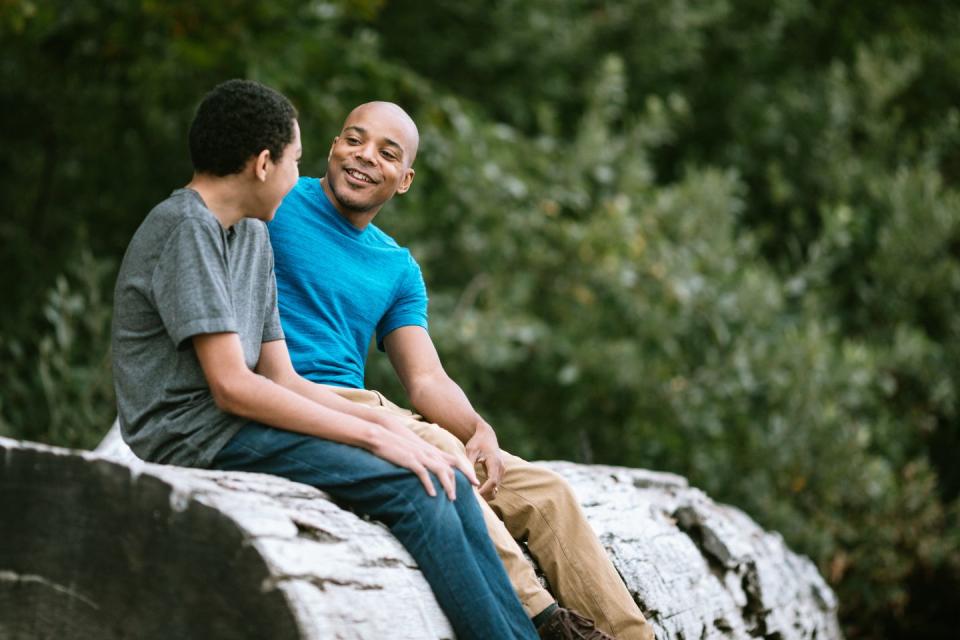
‘As a social worker, I have a huge dilemma about the child's rights in all this. Children can't wait around for years and years while their parents get their act together, because the damage increases every single day that a child is exposed to problems and issues, and they don't belong in institutions. But removing them and placing them with strangers isn't necessarily always the right answer either, because while it fixes the problem in the short term, as we know now from research, [it] creates a whole set of other issues.’
One of the biggest issues that the UK system is currently experiencing centres on race. The adoption process here poses barriers in terms of ethnicity. There is also indication of inherent biases on approval boards, which feels somewhat inevitable, considering the system involves people’s subjective opinions. Lena explains that she felt crushed early in the process, when she was told by a local authority, for reasons unbeknown to her, that it would be difficult to find her an adoptive child because they would need to be of Indian heritage, like herself. Naturally, she felt dejected at the thought ethnicity matching would block her from motherhood. Lena says, had she had a child biologically, they were unlikely to be 100% Indian anyway.
Sandhu goes some way to explain this, admitting, ‘Where possible, we do try to place children with families who are of a similar ethnicity’. He adds: ‘In the 1970s there was a very colourblind approach to adoption, where people felt that ethnicity and a child's skin colour didn't matter. But we know it matters. It matters in families sometimes, because [the] child isn't always accepted by the extended family, because they might have prejudiced or racist views. And we would never knowingly therefore expose a child to unnecessary extra trauma when they've already had the trauma they've started their life with.’
However well-intentioned this approach to race is, though, with assessment boards that mostly aren’t reflective of the racial spread of candidates, both adoptive and adoptee, prejudices can become problems before children have even had the chance of being matched. Lena says that of every social worker she saw, apart from one Filipino person, everyone was white. Her experience is backed by statistics. According to a study by Coram, as of September 2021, 76.6% of all social workers were white, 12.8% were Black, 3.9% were mixed ethnic background and 0.9% were from any other ethnic group. Furthermore, in March 31 2022, only 13% of local authorities were judged outstanding, 39% good, 35% as requiring improvement and 11% were judged to be operating ‘inadequately.’
Getting this process wrong, especially when it comes to issues of race, can have monumental consequences. For example, trans racially and internationally adopted children are at greater risk of developing a substance abuse issue, due at least in part to the psychosocial effects of looking and feeling different to the rest of your family. Racial matching is a rudimentary solution. It seems clear that we need to take a radically different approach to issues of identity.

Adoption’s future
So, what would it take to make the UK’s adoption system function better? ‘There’s a lot of talk in the sector about modernising adoption,’ says Sandhu, ‘And about open adoptions,’ whereby the biological parents have involvement in the child’s placement and might continue to have contact afterwards. And also ‘simple adoptions’ whereby a new kind of relationship is encouraged between the child and the adoptive family, but the kinship bond between the child and the biological family remains, in some way, intact. ‘A child's identity being stripped and replaced with something new is not good for their mental health - short term or long term,’ Sandhu finishes.
But beyond that, it seems strikingly apparent that our approach to adoption is wrong from the outset. As we’ve shown, it’s overwhelmingly a last resort, tumbled into by those desperate to start a family that have tried every possible other avenue and landed here when there was no other recourse to try. And it’s exactly those prospective adopters, who’ve spent years desperate for a baby, that are then totally unprepared for the realities of an adoption system that mostly doesn’t deal in infants under two. Many of whom have been through some level of trauma. An adopted child is an entirely different prospect to becoming a parent by conception, and nobody’s consolation prize.
There needs to be a big process of re-education, that positions adoption as a totally unique route to parenthood and guardianship. One that acknowledges the realities, and the beauty, of taking on a child with extra needs. And we also, indisputably, need government investment in both the social care system, and the resources available to those adopting out of it. Because A Life Less Ordinary doesn’t have it quite right. It definitely is ‘harder’ to adopt a kid who has been through the ringer already. And you shouldn’t go into it not knowing that. But, by goodness - if you consider the difference you will make to that child’s experience of warmth, care, understanding and to their potential outcomes - it’s worth it.
You Might Also Like


